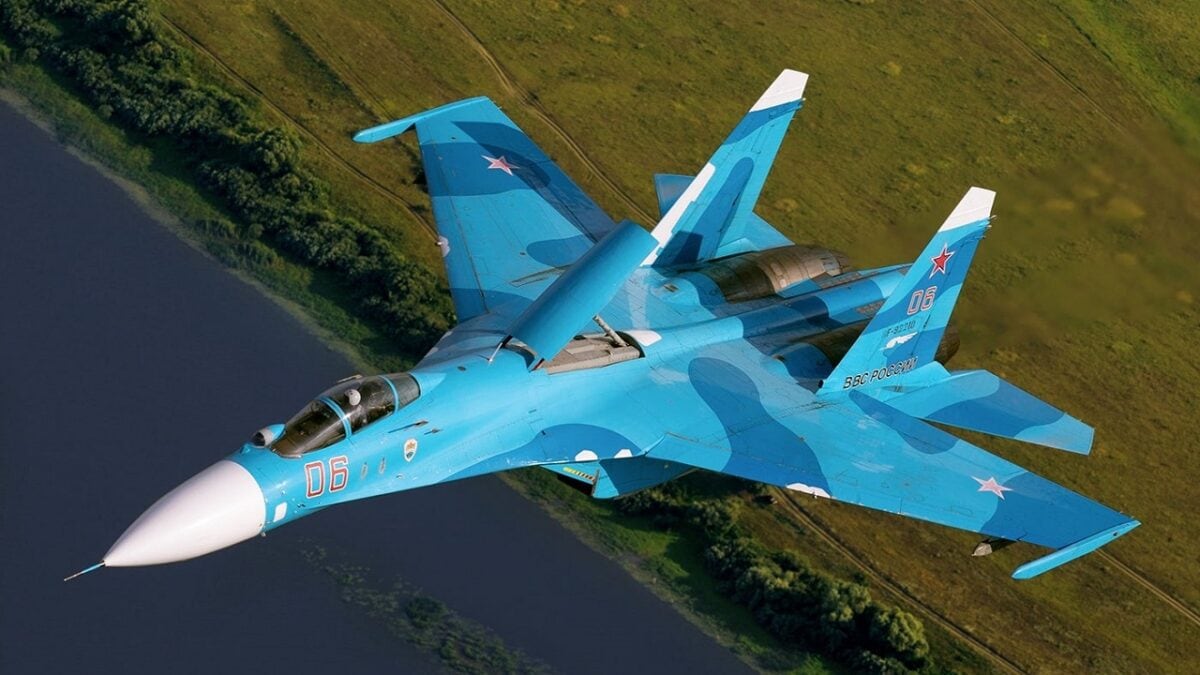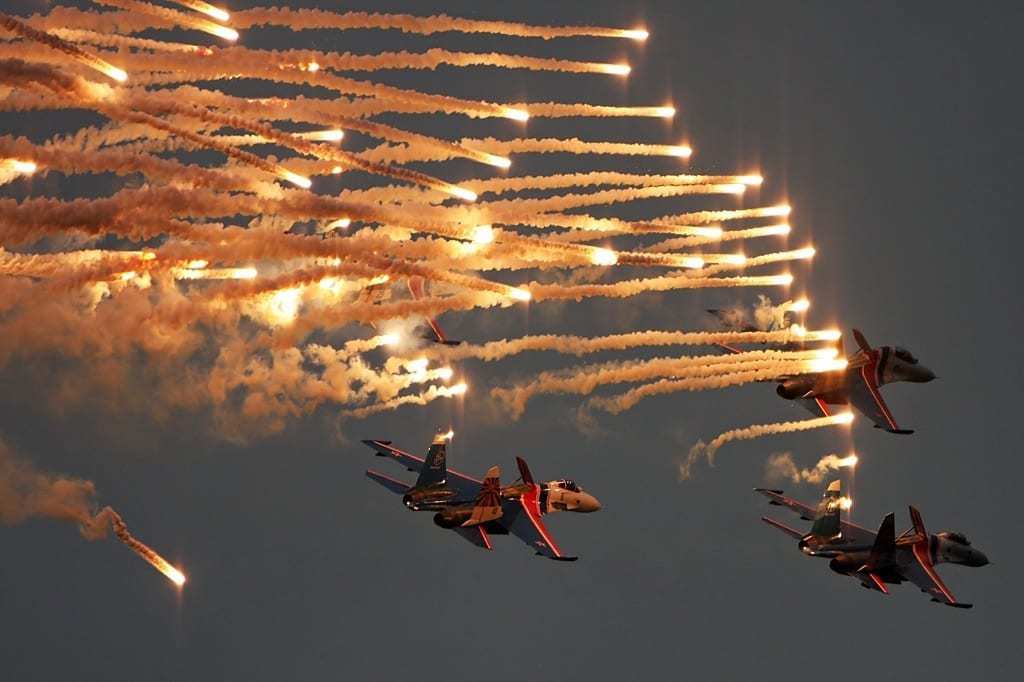A Russian Su-27 Flanker fighter jet came close to accidently shooting down a British spy plane last month, the British Ministry of Defense has said.
The incident highlights the danger of an accident that could spiral out of control and lead to an escalation in Ukraine.
Su-27 Fright Over the Black Sea
The incident took place on September 29. A pair of Russian Su-27 Flanker fighter jets were shadowing a Royal Air Force RC-135W Rivet Joint spy plane that was flying over international airspace in the Black Sea when suddenly one of the Russian fighter jets ‘released’ a missile in the area of British aircraft.
British Secretary of Defense Ben Wallace stated that the RC-135W Rivet Joint was conducting “a routine patrol” over the Black Sea in international airspace when it “was interacted with” by the two Su-27 Flanker fighter jets that were armed.
At some point, one of the Su-27 Flanker fighter jets released a missile in the vicinity of the RC-135W Rivet Joint from beyond visual range.
In addition to the RC-135W Rivet Joint spy plane, there was also an RQ-4 Global Hawk unmanned aerial system flying in the area when the incident took place.
As a result of the incident, the British Military suspended RC-135W Rivet Joint aerial patrols and conducted an investigation to review the safety of the aircraft. Wallace said that the aerial surveillance patrols have resumed, but now the RC-135W Rivet Joint aircraft are accompanied by fighter jets that are there to intercept and deal with any Russian aircraft that come too close to the spy planes.
It should be noted that it is not unusual for Russian aircraft to shadow NATO planes.
On their end, the Russians claimed that the missile launch was accidental and that a technical malfunction had occurred.
“We don’t consider this a deliberate escalation by the Russians,” Wallace said in an address to the House of Commons, adding that the incident serves as a stark reminder “of quite how dangerous things can be when you choose to use fighters in the way the Russians have done.”
Russian Threats
With a campaign that is going from bad to worse, Russian President Vladimir Putin has repeatedly made threats against the United States and NATO members and partners that have been supporting Ukraine’s defense.
The threats mostly have to do with a nuclear strike (Russia has the largest nuclear arsenal in the world and an unspecified number of tactical nuclear weapons).
Despite the vast quantities of weapon systems worth tens of billions of dollars shipped to Ukraine and the public support of Kyiv, the U.S. and NATO aren’t belligerents in this war. But the proximity of U.S. and NATO aircraft to the Ukrainian battlefield has the potential to cause an accident that could spiral out of control.

Russia’s Su-27 Flanker. Image Credit: Creative Commons.
Such incidents are the worst-case scenario for governments, for they can very well cause an escalation when neither side is looking for one. That is the reason why an open channel of communication should always exist, even between adversaries.
Expert Biography: A 19FortyFive Defense and National Security Columnist, Stavros Atlamazoglou is a seasoned defense journalist specializing in special operations, a Hellenic Army veteran (national service with the 575th Marine Battalion and Army HQ), and a Johns Hopkins University graduate. He is currently working towards a Master’s Degree in Strategy and Cybersecurity at the Johns Hopkins University’s School of Advanced International Studies (SAIS). His work has been featured in Business Insider, Sandboxx, and SOFREP.

